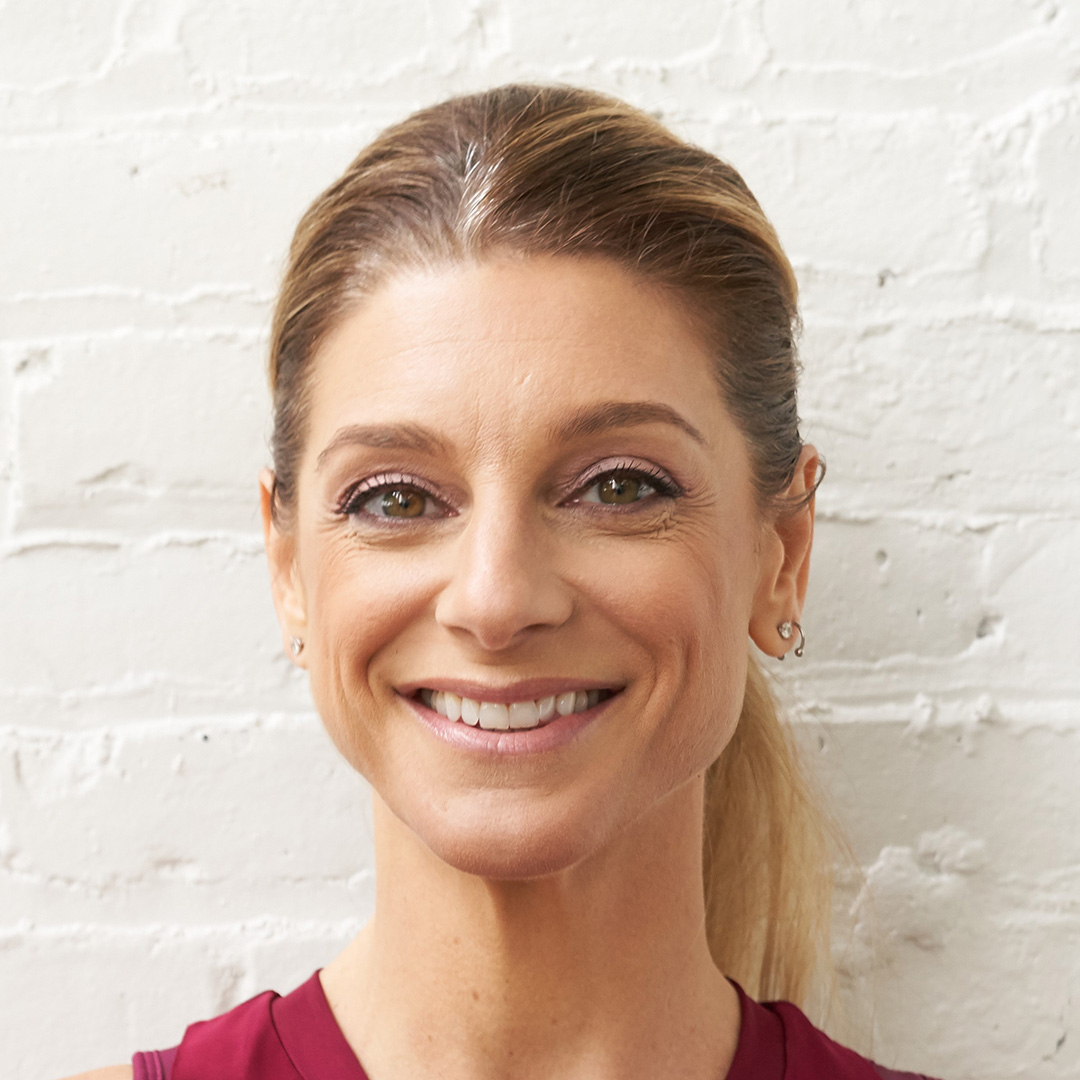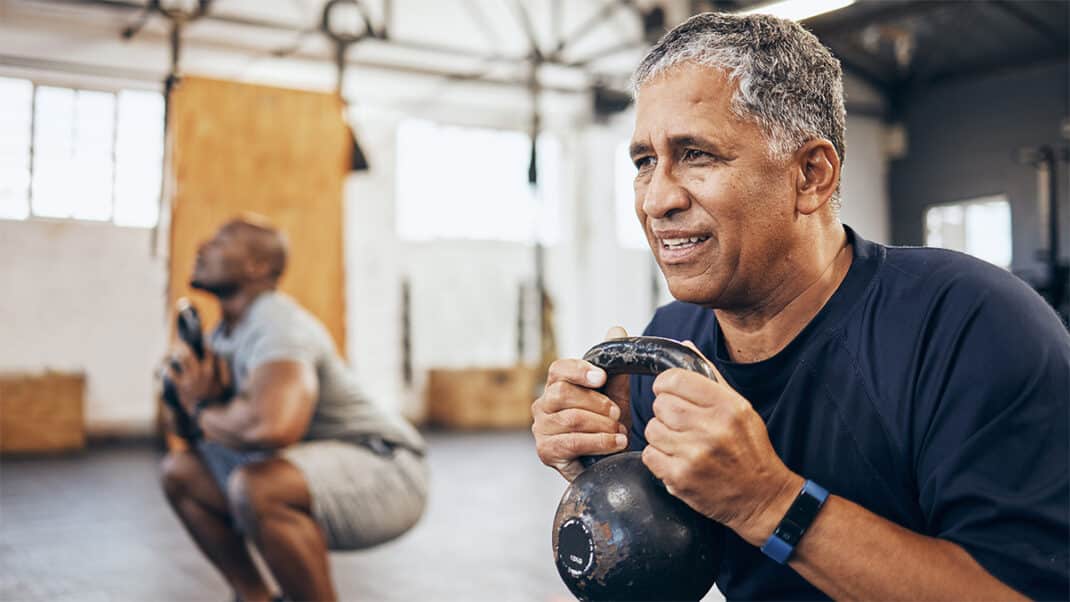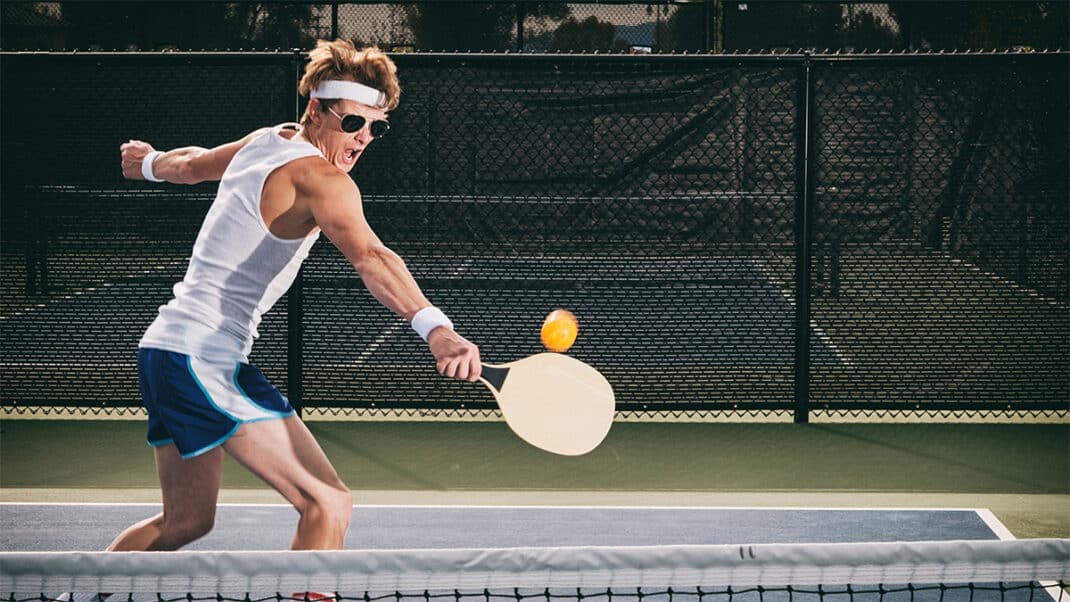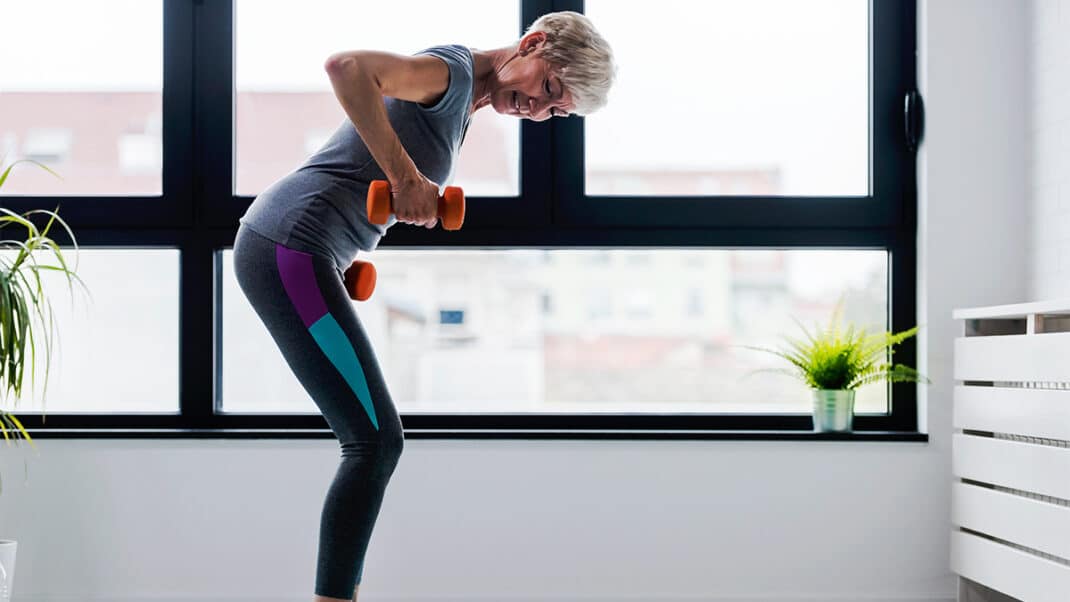The Shoulder, Part IV
Dynamic shoulder movements in the horizontal plane.
The past three Fine Anatomy articles have examined movements of the shoulder and the shoulder girdle. Because the shoulder is an immensely complex structure, personal trainers must invest a significant amount of time and effort learning its “functional pathologies” and understanding basic anatomy in order to create sound exercise program design.
Over this series, primary movements such as flexion, extension, abduction, adduction and rotation have been discussed. Although there are many other movement factors to consider in assessing the overall function of the shoulder, each of the past three articles provides insight into the movement “potential” the shoulder joint can obtain without obstruction.
This article wraps up the series by taking a look at dynamic shoulder movements in the horizontal plane (arm at 90 degrees from neutral, or 0 degrees from anatomical position). Each of the muscles discussed has already been cited over the course of the series, which has included detailed anatomical illustrations and charts that define muscle origin, action and insertion (see “Resources” on page 38). This article will sum up the dynamic range and “put the pieces together” to explain circumduction of the shoulder, which combines movements in all planes.
Ideal Movement
Movements of the shoulder girdle in the transverse (horizontal) plane involve movements of the scapula on the thorax. Ideally, the shoulder girdle should move easily backward or forward from neutral (Figures 1–3). If the shoulder girdle is set slightly posterior to neutral or slightly anterior, the movements of the humerus—such as rotation—will be altered owing to both glenohumeral and scapular positioning.
If pectoralis major, pectoralis minor or serratus anterior becomes adaptively shortened, the shoulder girdle (unilaterally or bilaterally) will be set slightly anterior, or forward. This will cause a change in range of motion (ROM) of both
the shoulder girdle and the humerus. Assuming this postural stance will limit shoulder ROM; movements will not look ideal, nor will they necessarily be executed properly. Many clients will need exercises broken into smaller motions before they can integrate the movements properly.
Horizontal Abduction and Adduction
Horizontal abduction and adduction are movements in the transverse plane about a longitudinal axis.
Horizontal abduction, also known as horizontal extension, is movement in a lateral and posterior direction 30–40 degrees in range. Posterior deltoid is the primary mover in this plane during repetitive actions. The range of horizontal abduction is greatly affected by the length of pectoralis major. Pectoralis major has a clavicular head and a sternocostal head so, if both heads contract, the humerus is able to produce adduction and medial (internal) rotation of the arm. If this muscle is chronically overused, shortened or restricted, horizontal abduction can be greatly limited.
Horizontal adduction is movement in an anterior and medial direction. The end position for complete horizontal adduction is the same as that for adduction obliquely upward across the body. Normal range in horizontal adduction should be approximately 140 degrees. This range can be tested by simply placing the palm of one hand on top of the opposite shoulder to check if full range can be achieved. Anterior deltoid and pectoralis major are the primary movers of the arm in this motion.
ROM in Transverse Plane
Horizontal flexion and extension are movements of the upper limb in the horizontal plane around a series of vertical axes; these movements involve both the shoulder joint and the scapulothoracic “joint.” The upper limb abducts to 90
degrees in the frontal plane and calls into
action supraspinatus, trapezius, serratus anterior and deltoid fibers relating to
the acromial region. These muscles work
to stabilize the horizontal position. Horizontal flexion (associated with adduction as the arm moves in front of the body) has a range of 140 degrees. Subscapularis, serratus anterior, pectoralis major and pectoralis minor can be recruited for this movement.
Horizontal extension (also associated with adduction as the arm moves toward the body) has a more limited range of 30–40 degrees. This movement is created by the posterior fibers of the deltoid, supraspinatus, infraspinatus, teres major and minor, rhomboids, trapezius and latissimus dorsi (acting as an antagonist-synergist with the deltoid). This movement is ideally executed when the scapulothoracic “joint” is not compromised and glides without restrictions. The horizontal range falls short of 180-degree movement from the extreme positions anteriorly to posteriorly. This movement successively mobilizes the various fibers of the deltoid group—the dominant muscles innervated.
A varying degree of ROM is created depending on the degree of elevation in abduction or flexion. Since the shoulder is a ball-and-socket joint, degree of range will vary depending on the humeral and elbow positions.
In the horizontal plane with the shoulder at 90-degree abduction and the elbow bent at a right angle, internal and external rotation can also strengthen the shoulder (Figures 4a–c). From this position, lateral or external rotation describes a 70-degree arc if shoulder girdle movement is not permitted. A 90-degree arc can be obtained if the scapula is allowed to tilt at end range. Positioning is key for executing rotational movements to strengthen the shoulder joint.
Circumduction
Circumduction consecutively combines the movements of flexion, abduction, extension and adduction as the upper limb circumscribes a cone with its apex at the glenohumeral joint. This movement can be performed in either direction and is used to increase the overall ROM of the shoulder joint. Clients can use their eyes to condition accessibility of the upper limbs by moving the limbs from one extreme position to another with the head fixed in the sagittal plane. Simply put, if clients create circumduction with movement specifically executed by the glenohumeral joint, their field of vision can be their guide to determine range. While maintaining neutral spine as the arm moves in circumduction, clients should always have their hand in full view. Once the hand wanders out of view, they’ll know that a great amount of movement has been recruited in the muscles affecting the scapulothoracic and sternoclavicular joints.
You can help clients with limited ROM to create movements by having them lie prone on a bench where the arms can move freely. You can also have them practice while supine, side-lying or standing to alter the impact of gravity as the angle of the humeral head is changed. If full range cannot be achieved in a standing position without accessory movement from either the head, neck or trunk, working in different positions can often lead to more freedom of ROM and also give clues as to which muscle is inhibiting motion. Circumduction should be smooth in its transitions about the axes. Clients showing compensatory movements to achieve full circumduction need to work toward full range step by step until ideal motion can be achieved. Be creative with movements of circumduction. If a client can’t do these movements standing, try other positions first.
In assigning muscle function, we assume that the arm starts in anatomical position, at the side of the body. In different positions, functional changes occur and may even be reversed. For example, pectoralis major is an arm flexor up to 60 degrees. Beyond 90 degrees, it can no longer move the arm forward or upward. In fact, beyond 90 degrees it begins to function as an extensor, bringing the arm back toward anatomical position. The same idea applies to latissimus dorsi in extension. In cases like these, deltoid tends to “take over” at the extremes of movement as other muscles become ineffective. Abduction of the arm, broadly defined as a movement of the upper limb away from the sagittal plane, is valid only to 90 degrees. Past that point, the upper limb moves toward the body, yet the movement is still termed abduction.
The multiarticular complex of the shoulder is mechanically linked with the potential to function in concert. In practice and training, groups of muscle can work simultaneously with a variable contribution from each joint region, depending on type of movement. Exercises should not always be limited to strict range, as movements of the arms are dynamic.
Work with your clients to achieve a better understanding of their postural positioning and ideal joint ROM. Even a very muscularly strong body can have severe structural faults if positions of joints are never addressed.
Using cables, resistance bands, free weights and other props, you can create exercises to enhance the shoulder’s range of motion (ROM). When necessary, break down these movements into stages to increase client awareness of intended motions. These exercises are meant to enhance structural strength more than “muscular strength.” Watch for and correct compensatory movements facilitated by strong muscular fibers not needed for the movements selected.
Standing Horizontal-Plane ROM. Resistance bands or cables can be used at approximate height of shoulder joint.
- Raise arm to 90-degree abducted position so arm is horizontal to floor.
- Depending on body position to cable’s resistance, different recruitment patterns will create movement in the horizontal plane. For example, if nonexercising arm is nearest to machine, focus on stabilizing scapula as arm moves toward 0 degrees or 90 degrees abducted (FIGURES 5a-b). If facing machine, focus on recruiting strength of posterior deltoid fibers (FIGURES 6a-b). If facing away from machine, focus on recruiting anterior head of deltoid and pectoral muscu┬¡lature, along with stabilizing the mechanics of shoulder girdle (FIGURES 7a-b). ÔÇéÔÇéWith body position in mind, horizontal abduction/adduction (flexion and extension in hori┬¡zontal plane) can become an exercise facilitating a small or large component of arm’s potential range (0-140 degrees across body; 0-30 degrees of horizontal extension; or a full range of 140 degrees of horizontal flexion to -┬¡30 degrees of horizontal extension).
- Experienced trainers may choose to use their own arm as resistance against the client’s range in either direction. When working with horizontal range, there is no true beginning or end range. Rather, the focus should be on ideal, smooth movements in the range selected.
- Use slow, controlled ROM to train and coordinate these movements. Challenge client by changing tempo as you alternate from set to set.
- Attempt 8-10 repetitions in any part of this ROM with emphasis on timing of muscle firing. Perform up to 3 sets; 2 minutes’ rest between sets. >>
STANDING HORIZONTAL-PLANE ROM.
FIGURES 5a-b: 0- 140 degrees. Nonexercising arm is toward machine.
FIGURES 6a-b: Client faces machine, arm moves from 0-90 degrees and returns to 0. Focus on breath during movement. Movement can be increased to 30-degree extended range as client becomes more aware of ROM.
FIGURES 7a-b: Client faces away from machine and works to stabilize shoulder in 30-degree extended range, moving toward 90-degree horizontal flexion.
Length Integration Circumduction. Keeping arm at a fixed point, move body “around” arm. This exercise is great for clients with “frozen shoulder,” as weight of arm becomes irrelevant and focus is on the movement instead.
- Emphasize scapular glide and expansion of pectoralis muscles as range is increased in extension phase. This can be performed for circumduction (FIGURES 8a-c) or for simple horizontal range (FIGURES 9a-c).
- Attempt 8-10 repetitions in any part of this ROM with emphasis on timing of muscle firing. Perform up to 3 sets; 2 minutes’ rest between sets.
LENGTH INTEGRATION CIRCUMDUCTION (FIGURES 8a-c). With arm at a fixed point, body moves around arm. This promotes movement and length, not muscular strength.
LENGTH INTEGRATION IN HORIZONTAL FLEXION/EXTENSION (FIGURES 9a-c).Arm is the fixed point; body moves around arm.
Side-Lying Horizontal Flexion/Extension (FIGURES 10a-c). With very light weights, ROM can be found in a side-lying position. Focus is still on deltoid, but firing rate and timing of contraction are altered owing to trunk position.
- Arm begins at 140 degrees of flexion and ends at comfortable range of extension. Focus is on scapular glide and on the ROM the arm can create.
- Attempt 8-10 repetitions in any part of this ROM with emphasis on timing of muscle firing. Perform up to 3 sets; 2 minutes’ rest between sets.
SIDE-LYING HORIZONTAL FLEXION/EXTENSION (FIGURES 10a-c).
Circumduction
Create movements and incrementally add weight to challenge client’s ability to maintain good ROM. Coach client to use eyes to follow arm movement in its full range. This can be done standing, supine, side-lying, seated or prone on a ball or bench. Range can be performed in segments for clients who have difficulty moving arm in full ROM or if this exercise is used in group exercise setting. FIGURES 11a-f show exercise performed while standing, but be creative with new positions to challenge your client.
- Begin with arm at anatomical 0 degrees at side of body.
- Work a full half circle using field of vision as guide for range. (If hand floats beyond vision, range has been exceeded.)
- ROM can be increased to explore range that facilitates spinal rotation and scapular glide. Help client become more aware of when glenohumeral joint is used exclusively and when it is used in combination with surrounding structures. This range can also be reversed, with arm moving into extension, then overhead.
- Work on specific ROM around the shoulder with body fixed, then create a connected movement from trunk and legs to create a sense of full-body motion (FIGURES 12a-d).
- Concentrate on the breath and its connection with the movement.
- Perform 5-10 repetitions in either direction.
- These shoulder ROM exercises can also be useful for discovering movement potential in the frontal plane (FIGURES 13a-e) and can be performed with or without light weight.
CIRCUMDUCTION OF ARM RANGE (FIGURES 11a-f). Body is fixed, and arm moves only where eyes can follow it.
CIRCUMDUCTION WITH LEG MOVEMENT (FIGURES 12a-d). Work on specific ROM around shoulder with body fixed, then create a connected movement from trunk and legs to create a sense of full-body motion.
CIRCUMDUCTION VARIATION WORKING IN FRONTAL PLANE (FIGURES 13a-e). Discover movement potential in frontal plane.
Chaitow, L. G. 2003. Palpation and Assessment Skills. Churchill Livingstone.
Hitzmann, S.L. 2003. The shoulder girdle. IDEA Personal Trainer, 14 (9), 36–42.
Hitzmann, S.L. 2004. The shoulder complex, part II. IDEA Personal Trainer, 15 (3), 42–7.
Hitzmann, S.L. 2004. The shoulder, part III. IDEA Personal Trainer, 15 (5), 39–43.
Kapandji, I.A.. 1982. Physiology of the Joints (Upper Extremities) (5th ed.). Churchill Livingstone.
Kendall, F.P., & McCreary, E.K. 1993. Muscles: Testing and Function (4th ed.). Lippincott Williams & Wilkins.
Sue Hitzmann, MS
Sue Hitzmann, MS, is the creator of the MELT Method®, nationally recognized educator, manual therapist and founding member of the Fascia Research Society. She is a presenter for IDEA, ECA and PMA, and a CEU provider for ACE, AFAA, NASM, PMA and NCBTMB. She has trained instructors from over 20 countries and is the author of the New York Times bestseller The MELT Method, which has been translated into eight languages, as well as the recent book, MELT Performance.






